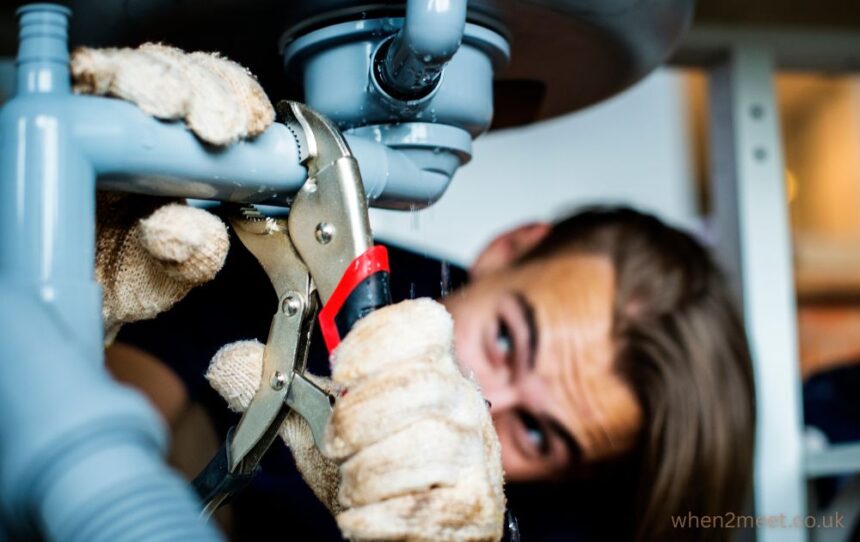Plumbing problems always seem to appear at the most inconvenient times. A dripping pipe under the sink, a small crack in a basement water line, or a sudden leak in the yard can quickly go from a minor annoyance to a full-blown emergency. In these moments, homeowners often face a big question: is this something that requires professional repair, or can a clamp or coupling provide a reliable fix? Understanding the difference between calling a plumber and using repair products on your own can save time, money, and stress. And when quick service is needed, many people search for emergency pipe repair near me to ensure the issue is handled before more damage occurs.
Why the Type of Pipe Damage Matters
Every pipe problem is not created equal. A tiny pinhole leak on a copper pipe is very different from a split PVC drain line or a crack in a cast-iron sewer connection. The extent and type of damage play the largest role in determining whether a professional should be called immediately or whether a clamp or coupling can solve the problem temporarily.
Hairline cracks, small leaks, or isolated spots of corrosion may be manageable with the right repair hardware. On the other hand, structural failures or multiple leaks across one section of pipe usually require more than a quick fix. Knowing the difference gives you the confidence to act fast while avoiding wasted money on products that might not solve the problem.
How Clamps and Couplings Work
Before making a decision, it is helpful to understand how clamps and couplings actually function. Repair clamps are designed to seal around the damaged section of pipe, using a rubber gasket that compresses under the metal band to stop leaks. Couplings, on the other hand, are used to connect two sections of pipe securely, either after cutting out a damaged area or when joining new pipe into an existing line.
These products are simple in design but very effective for certain applications. A properly sized clamp can stop a leak instantly and hold for years, while a coupling can bridge materials and keep water moving where it needs to go. Their versatility has made them popular with plumbers and do-it-yourself homeowners alike. Many families even keep a few clamps on hand for unexpected leaks, especially products like sewer line repair clamps for home use.
When to Call a Professional Plumber
While clamps and couplings are incredibly useful, they are not a magic cure for every situation. Some problems go beyond the reach of hardware and need the training and tools of a professional plumber. For example, if a leak is coming from an underground line or if water pressure has dropped throughout the house, the issue is likely connected to a larger system failure. In these cases, replacing a section of pipe, addressing corrosion, or dealing with root intrusion in sewer lines will be necessary.
Professionals also have specialized equipment like pipe cutters, soldering tools, inspection cameras, and hydro-jetting machines. These resources allow them to diagnose and fix problems more accurately and ensure the entire system is protected from future damage. Homeowners may find that a clamp works for a while, but if the problem is systemic, the leak will likely return.
Balancing Cost and Long-Term Reliability
The decision between calling a plumber manly and using a clamp or coupling often comes down to cost and reliability. Hiring a professional can be more expensive upfront, but it provides peace of mind and a lasting solution. Using a clamp is less expensive, but it might only be a temporary fix.
Think about your goals. If you need to stop a leak quickly to avoid water damage and buy time before scheduling a major repair, a clamp is an excellent tool. If you are hoping to avoid recurring issues, a professional fix will usually be the better investment. Both options have a place, and understanding when to use each one will help you make a smarter choice.
Matching Materials and Sizes
Another important consideration is pipe material and sizing. Clamps and couplings are not one-size-fits-all solutions. A clamp that works on PVC might not properly seal on copper. Cast iron pipes may require heavy-duty clamps with reinforced bands. Choosing the wrong size or material can result in a poor seal that leaks again almost immediately.
This is where many homeowners run into frustration. It is easy to assume that any clamp will do, but the truth is that matching the right product to the right pipe material makes all the difference. A little research before purchase can prevent wasted time and repeated trips to the hardware store.
Emergency Fix vs Permanent Repair
There is also an important distinction between emergency fixes and permanent repairs. A clamp or coupling can give you the breathing room you need when a pipe starts leaking at night or on the weekend. It can stop water from spraying, prevent flooding, and allow normal household activities to continue until a plumber arrives.
However, leaving a temporary fix in place for too long can cause problems down the line. If the underlying cause of the leak is not addressed, the pipe may weaken further, or the clamp may fail unexpectedly. The smartest approach is to treat clamps and couplings as part of an overall strategy, rather than a complete solution.
Pipe problems are stressful, but knowing your options makes them easier to handle. Small leaks and minor cracks can often be controlled with clamps or couplings, giving you more control and peace of mind. Larger system issues, however, are best left to a professional plumber who can make lasting repairs and prevent further damage.
In the end, the best solution is a combination of both approaches. Keep clamps and couplings in your toolbox for emergencies, but do not hesitate to call for help when the situation is beyond your reach. A little preparation and the right knowledge ensure your home remains safe, dry, and functional no matter what plumbing challenge comes your way.



